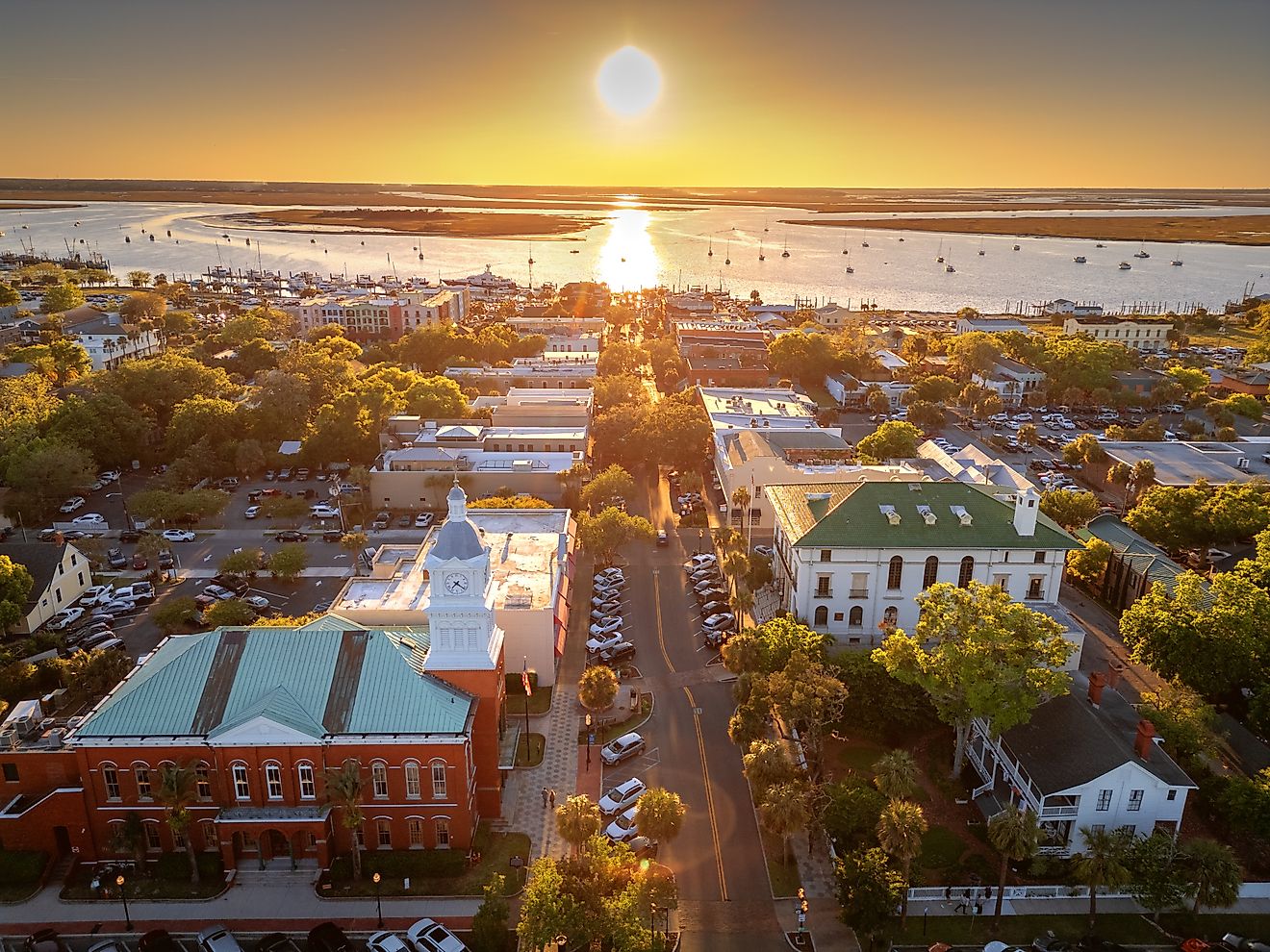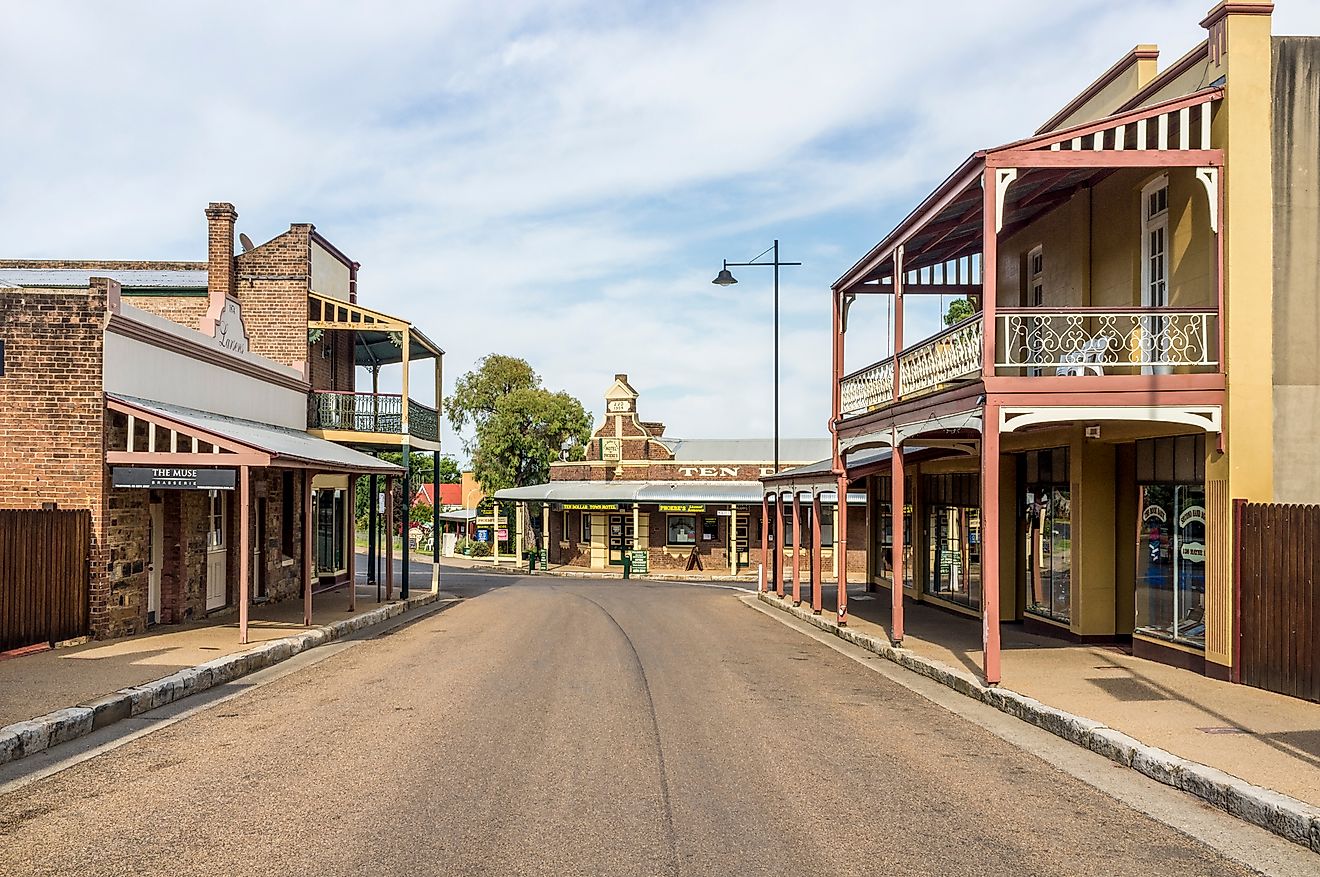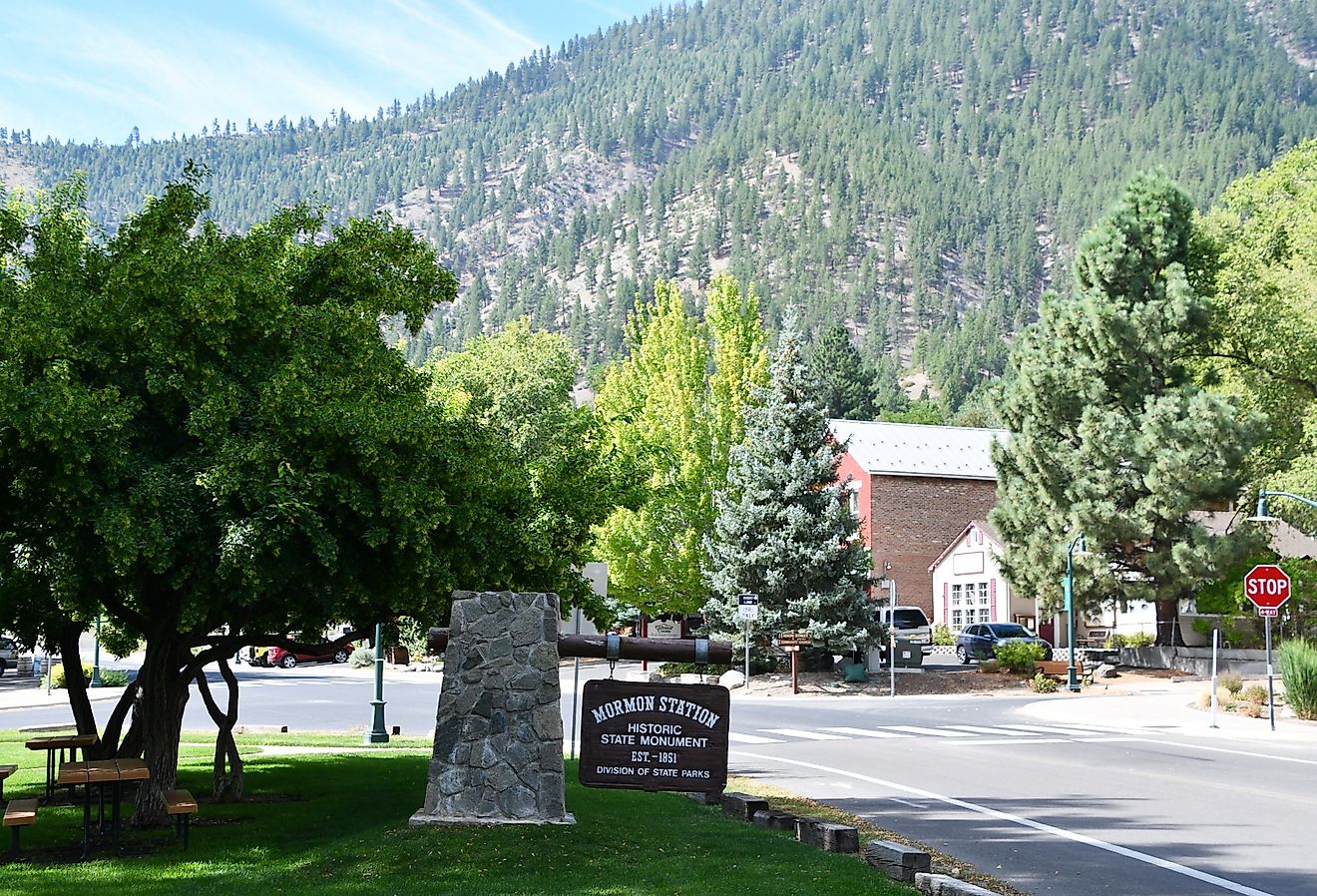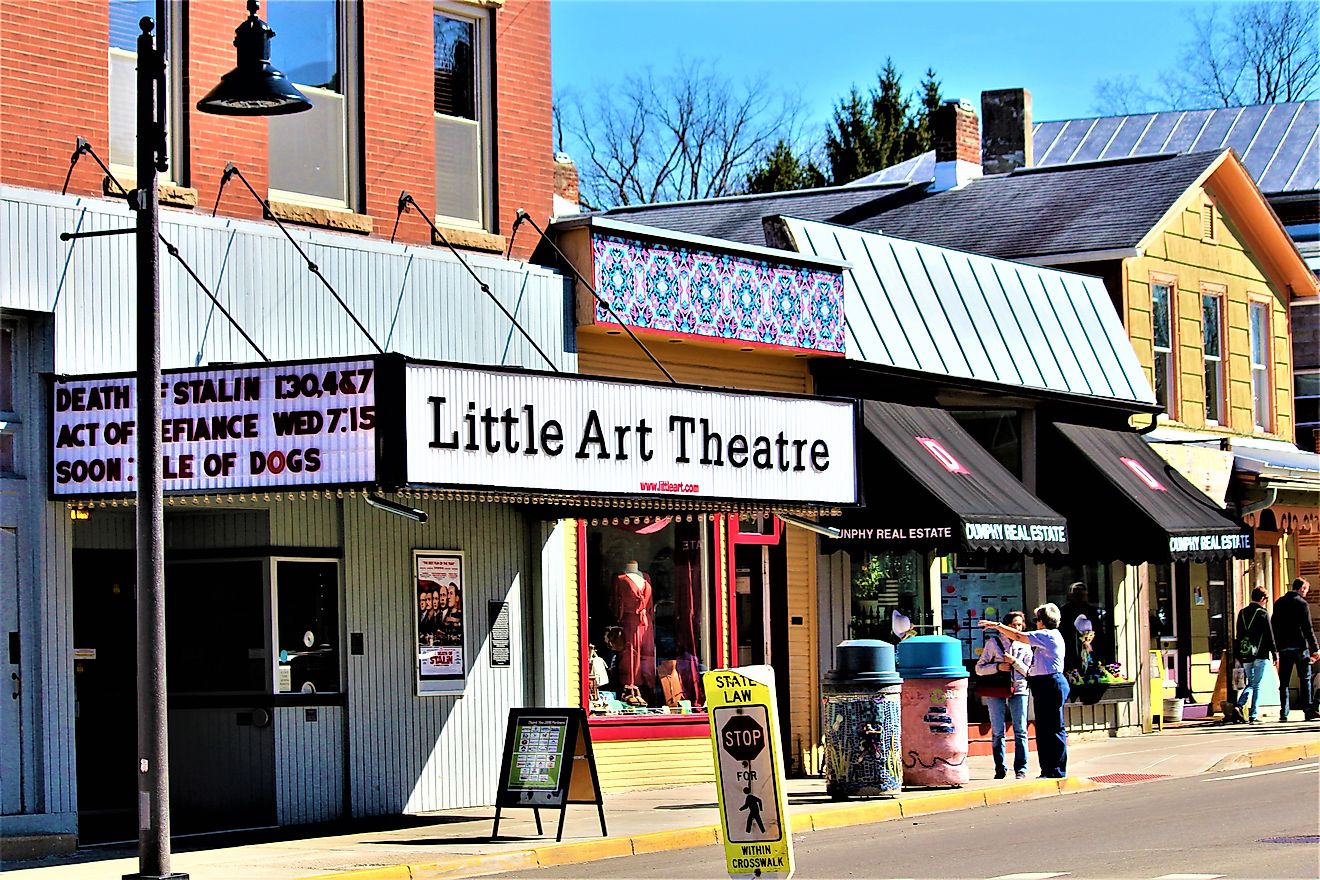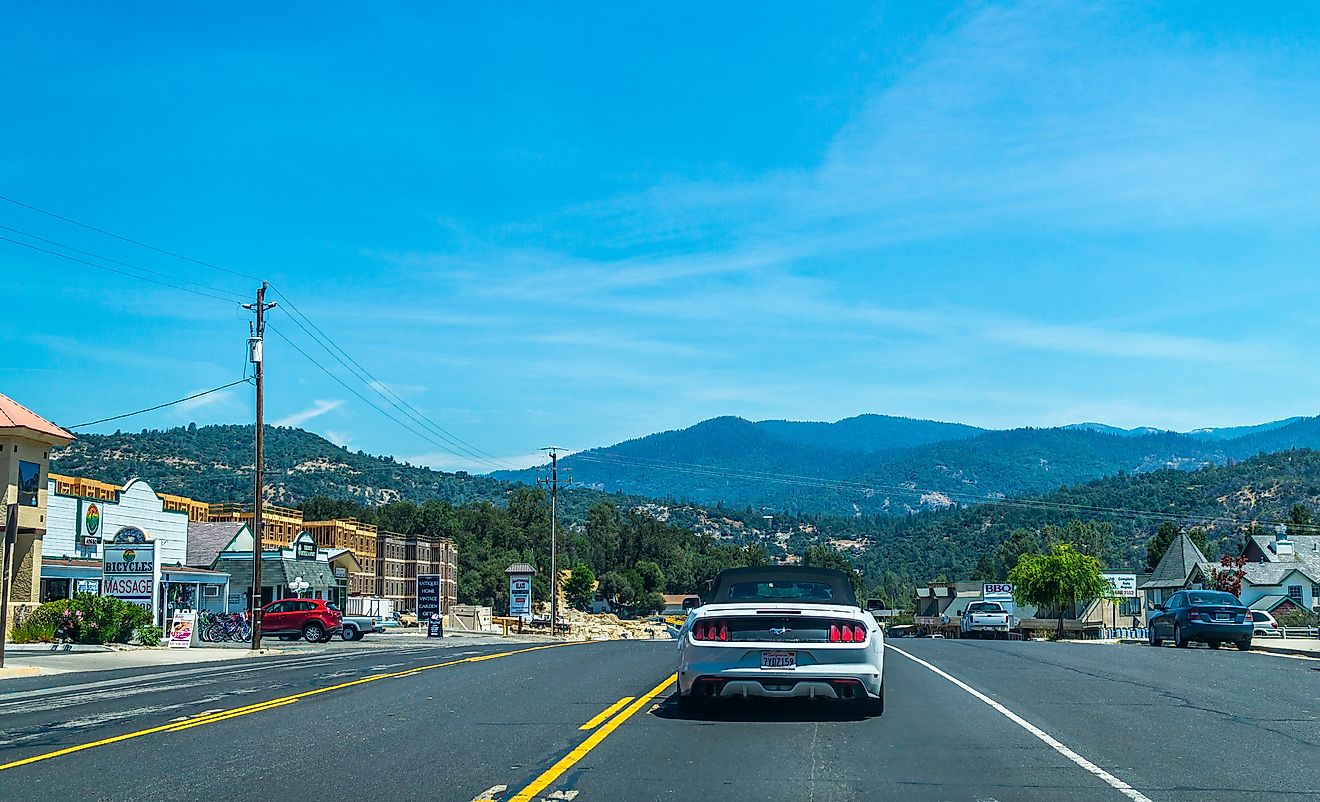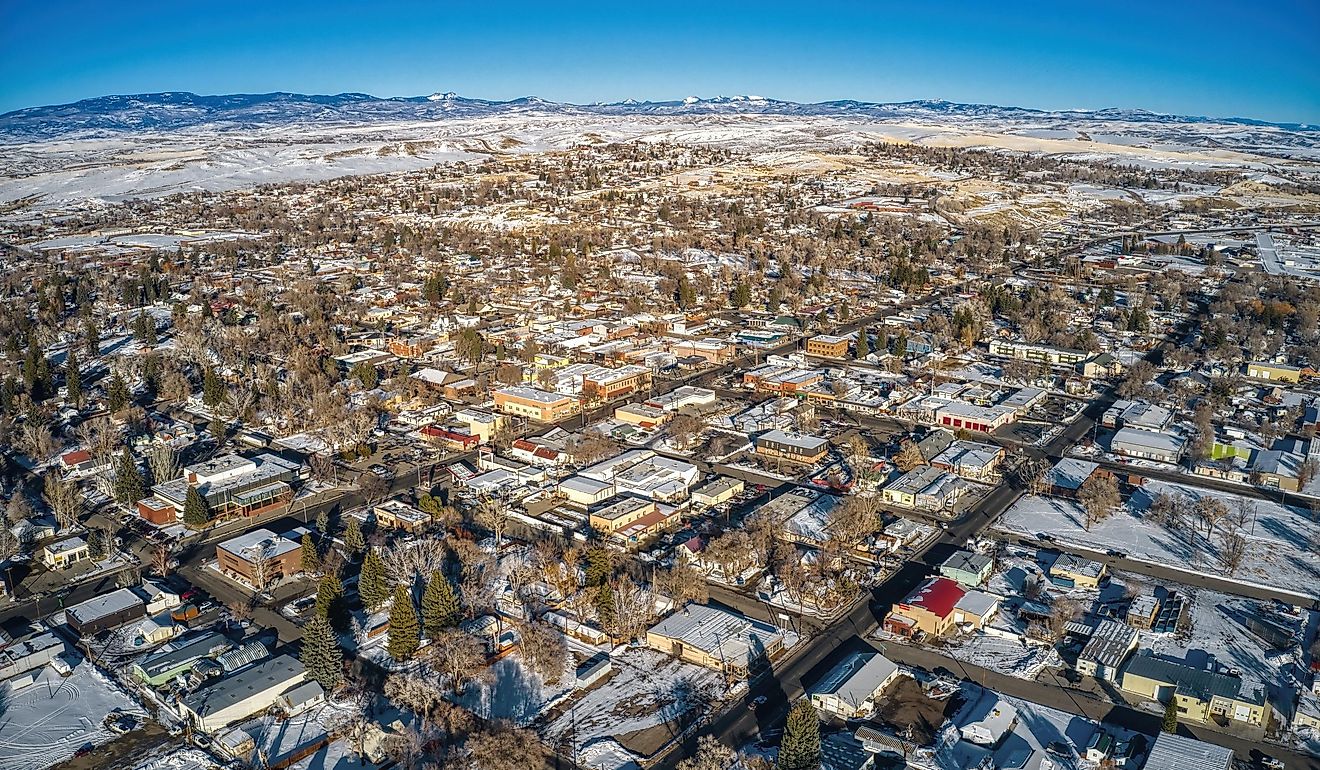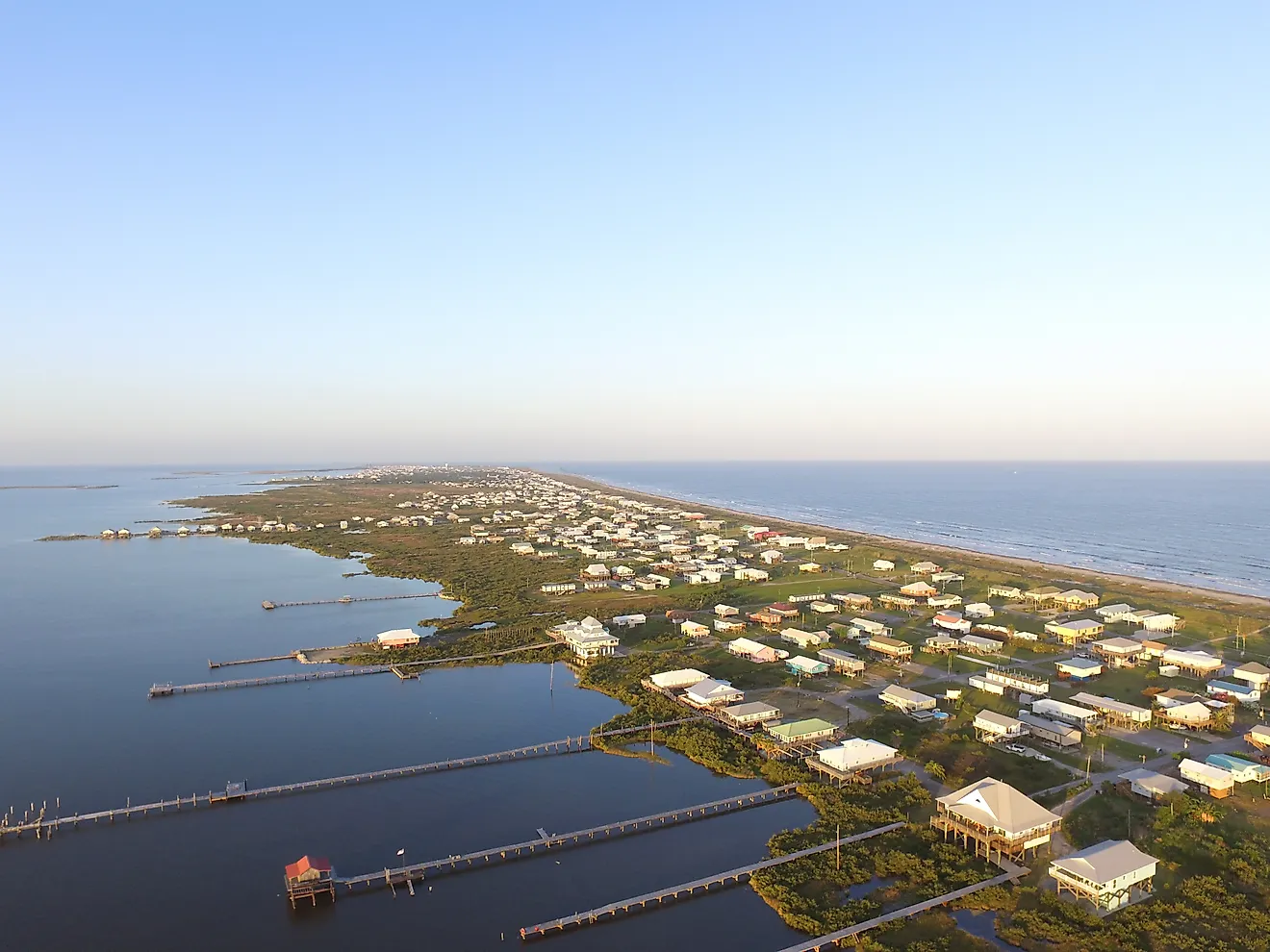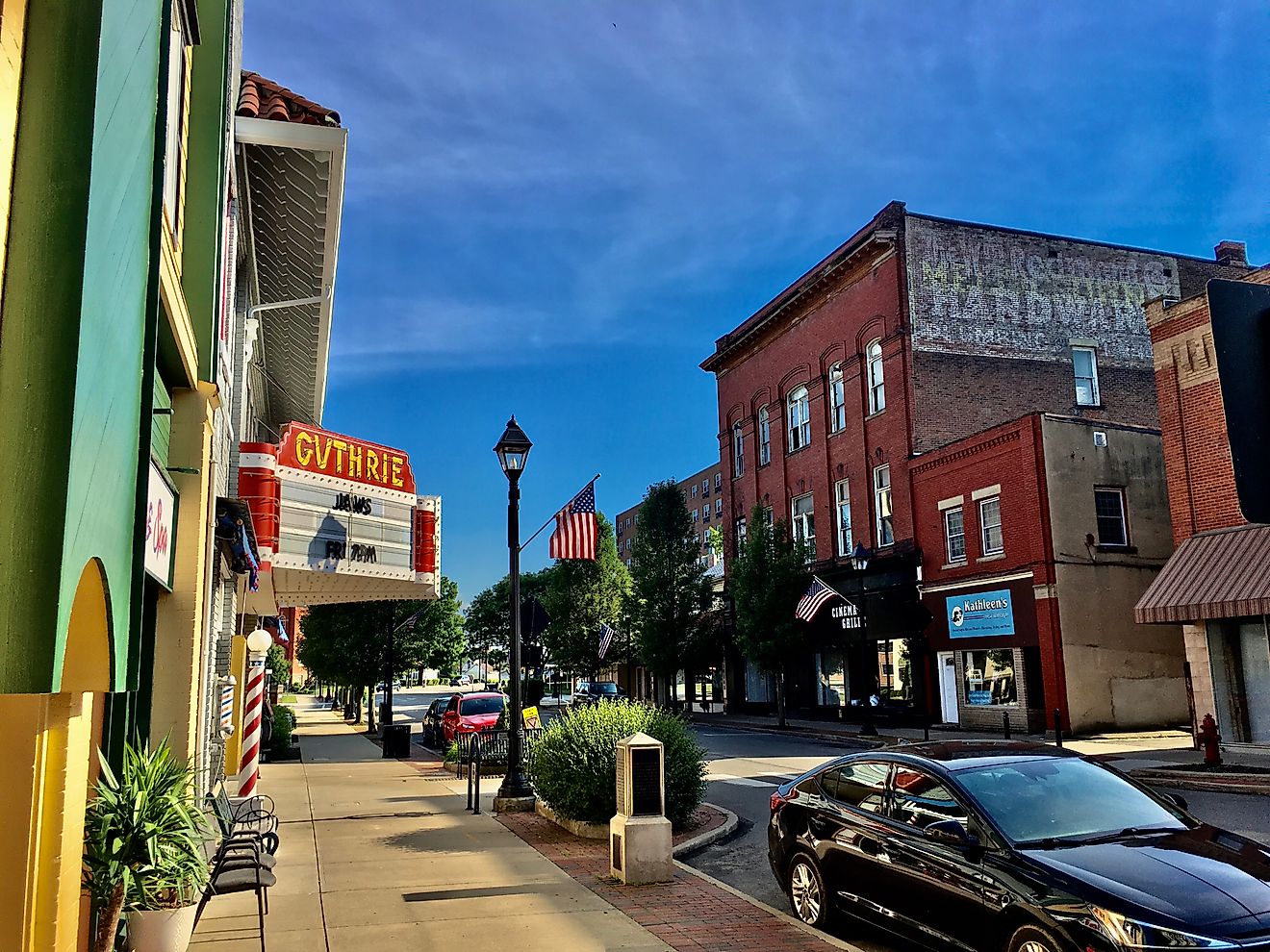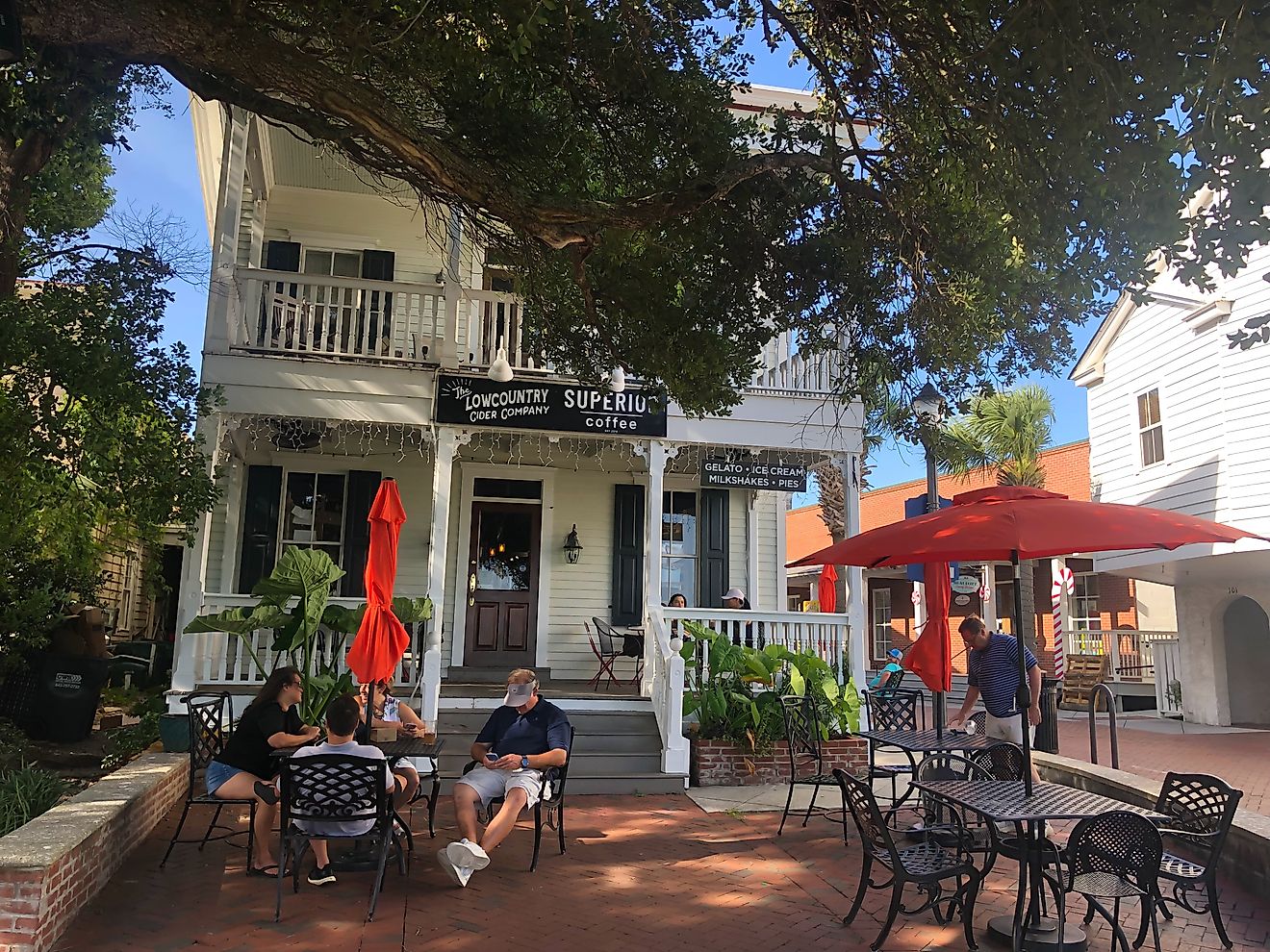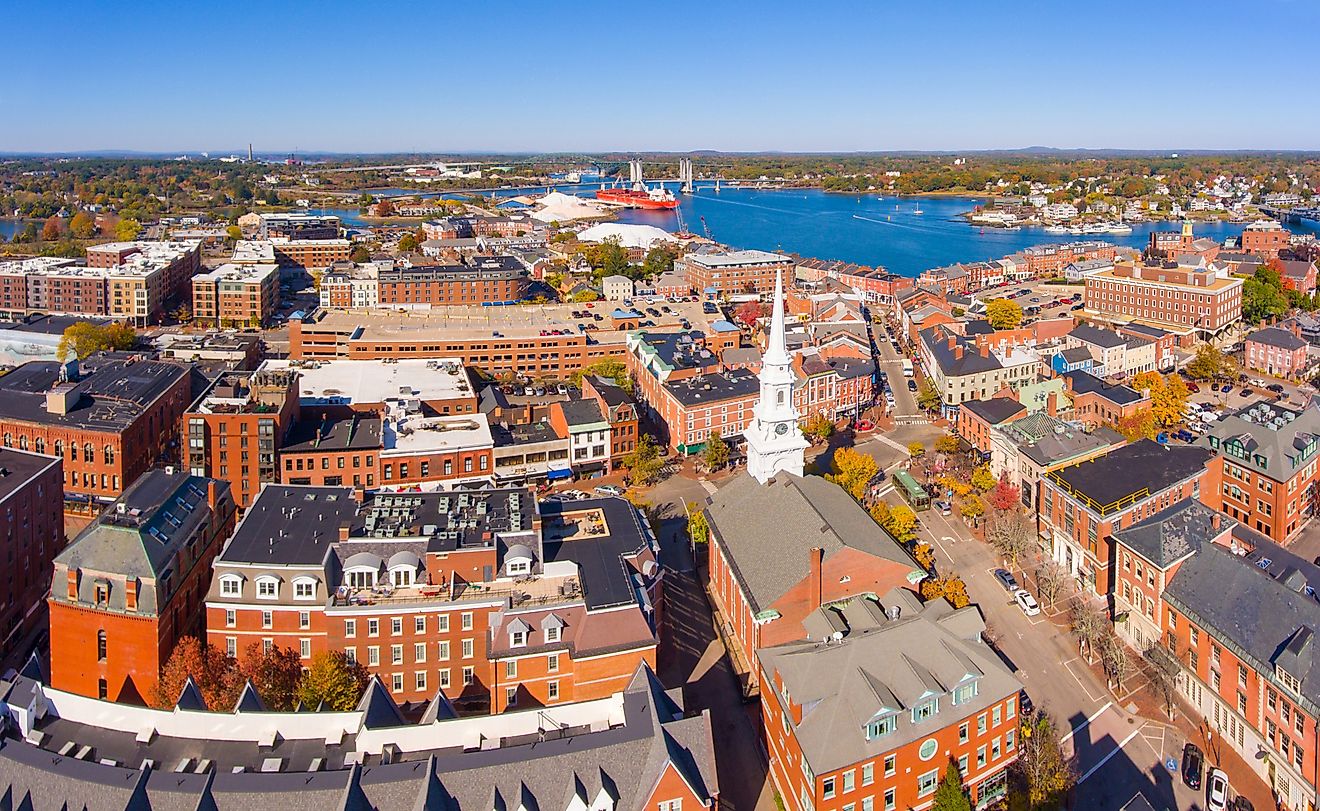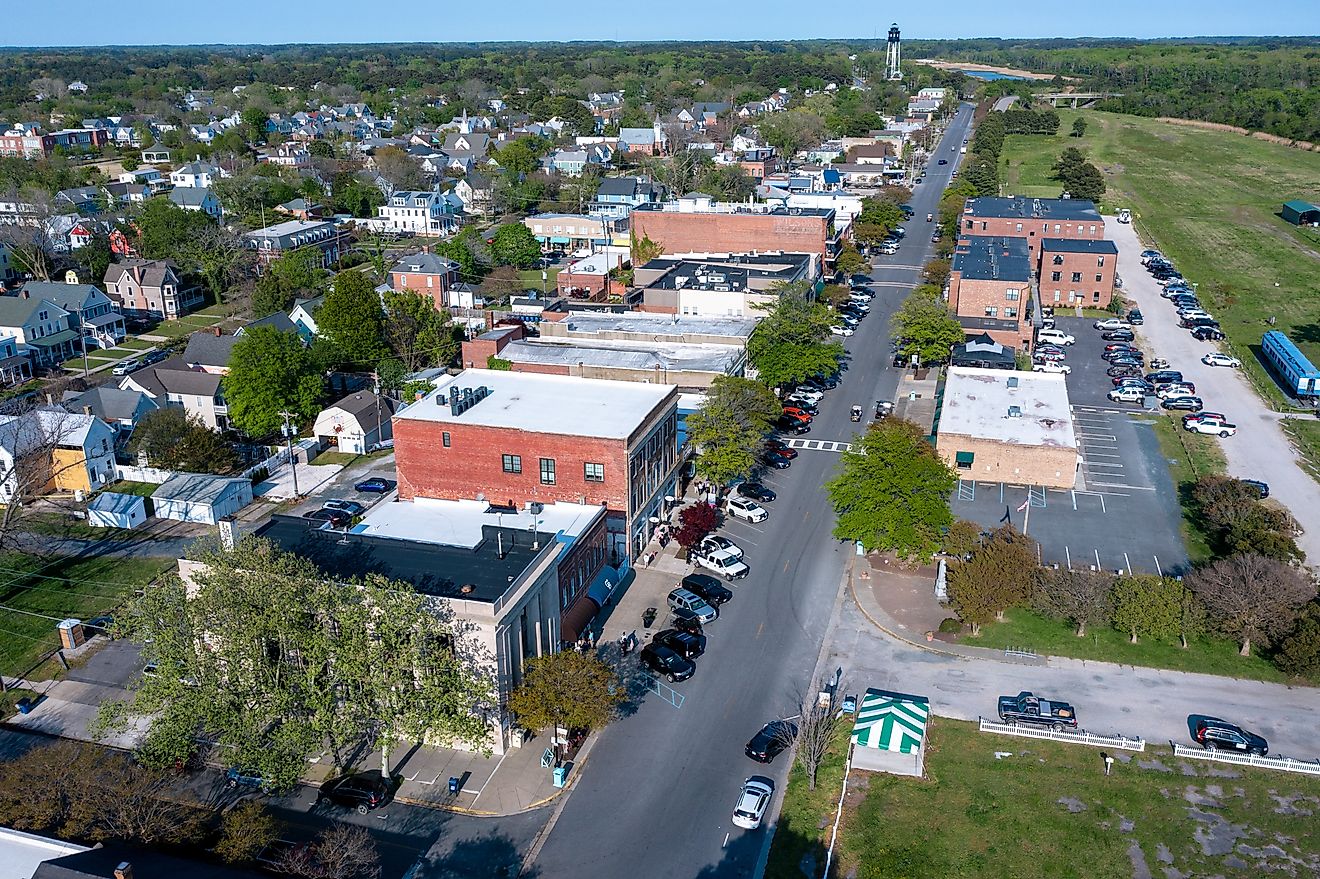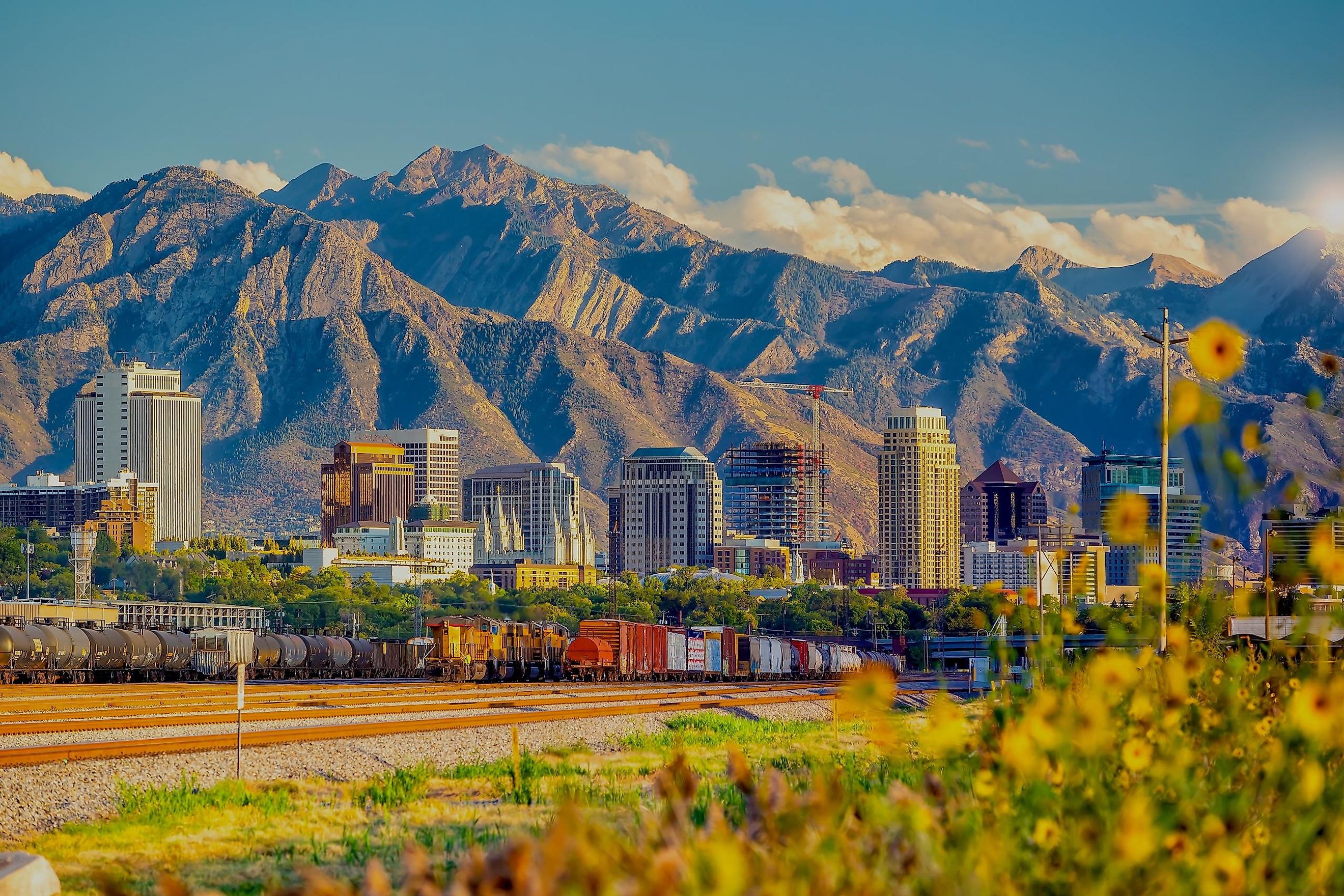
Salt Lake City, Capital Of Utah
Salt Lake City, the county seat of Salt Lake County, is the capital and the most populous city of the US State of Utah. Located in the state’s north-central portion, Salt Lake City forms the nucleus of the Salt Lake City Metropolitan Area, which is further placed within the larger Salt Lake City-Ogden-Provo Combined Statistical Area. A group of Mormon pioneers led by the American religious leader Brigham Young founded the city in 1847, and the city was named due to its closeness to the Great Salt Lake. In later years, the construction of the first transcontinental railroad brought economic growth to the city, earning it the nickname “The Crossroads of the West.” Besides being the headquarters of the LDS Church, Salt Lake City is also the nation’s industrial banking center. At present, the city has developed a robust tourist industry based on religious tourism, skiing, and other outdoor recreation activities.
Geography Of Salt Lake City
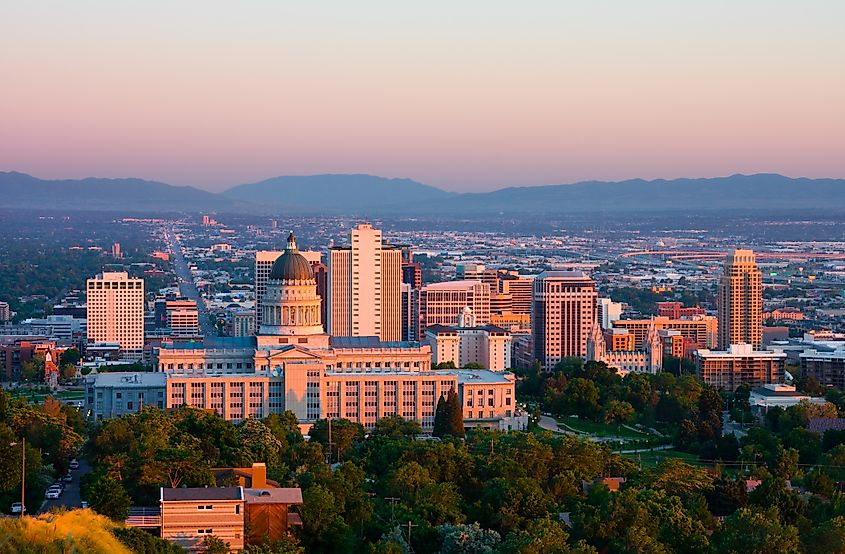
Located in the Salt Lake Valley’s northeastern corner at an elevation of 4,327 ft above sea level, Salt Lake City covers an area of 110.81 square miles, of which 110.34 square miles is occupied by land and 0.47 miles is covered by water. The city is surrounded by the Wasatch Range in the east, the Oquirrh Mountains in the west, and the Great Salt Lake in the northwest. The surrounding mountains contain many narrow canyons, such as Parleys Canyon, Emigration Canyon, Millcreek Canyon, and City Creek Canyon, that border the city’s eastern limits.
There are several well-defined neighborhoods in Salt Lake City. The affluent eastern neighborhoods include the Avenues, Sugar House, Yalecrest, Federal Heights, and 9th and 9th. The young people and the immigrants prefer living in the city’s western neighborhoods like Glendale, Poplar Grove, and Rose park. Downtown Salt Lake City serves as a commercial hub of the Intermountain Region. Main Street, which anchors the downtown area’s historic core, initially served as the city’s principal commercial avenue in the late 19th and beginning of the 20th century. The Walker Center was constructed halfway between the Salt Lake Temple and the Salt Lake City and County Building. Some other notable structures in the city include: the Utah State Capitol, Kearns Building, Joseph Smith Memorial Building, Continental Bank Building, and the Clift Building. In addition, there are two historic passenger rail depots on the downtown’s western edge, the Union Pacific Depot and the Rio Grande Depot.
Climate Of Salt Lake City
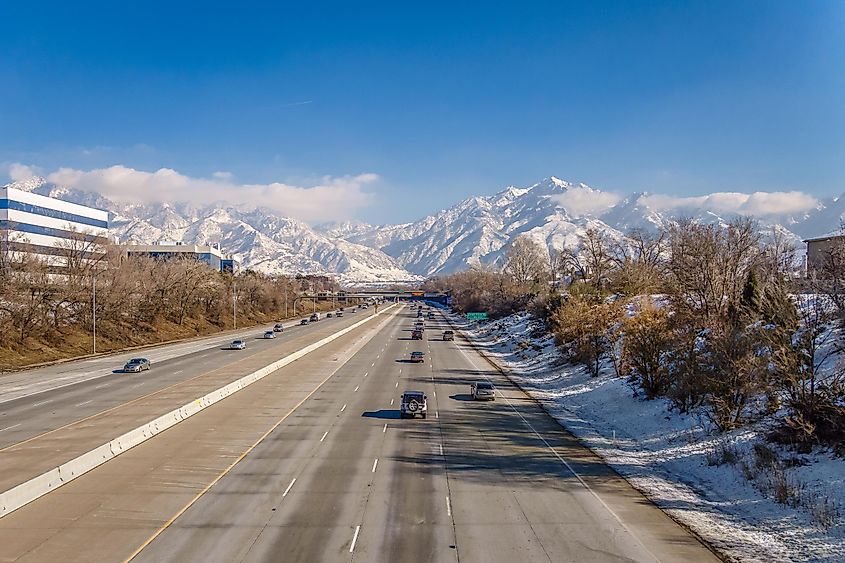
According to the Köppen Climate Classification, Salt Lake City experiences a cold semi-arid climate, although it borders a Mediterranean climate and a humid continental climate. The summers are hot and dry, while the winters are extremely cold and snowy. The hot season lasts from June 10 to September 13, where July is the year’s hottest month, having an average high temperature of 77°F. The cold season lasts from November 22 to February 24, where January is the year’s coldest month, having an average low temperature of 29.2°F. The city receives an average rainfall of 20 inches and a snowfall of 54 inches annually. The afternoon thunderstorms during mid-to-late summers are caused by monsoon moisture moving northwards from the Gulf of California; whereas the frequent snowfall during the winter months is attributed to the lake effect from the adjacent Great Salt Lake.
Brief History Of Salt Lake City
The Salt Lake Valley was inhabited by the Shoshone, Goshute, Weber Ute, and Paiute indigenous tribes for thousands of years. In 1843 and 1845, the Great Salt Lake and the Salt Lake Valley area were surveyed by the American military officer John C. Fremont. The city was founded by a group of Mormon pioneers led by Brigham Young in July 1847. The settlers proposed a “State of Deseret” in March 1849. However, this proposal was rebuffed by the United States Congress, and the Utah Territory was established in 1850. Great Salt Lake City was chosen as the territorial capital, with its name being shortened to Salt Lake City.
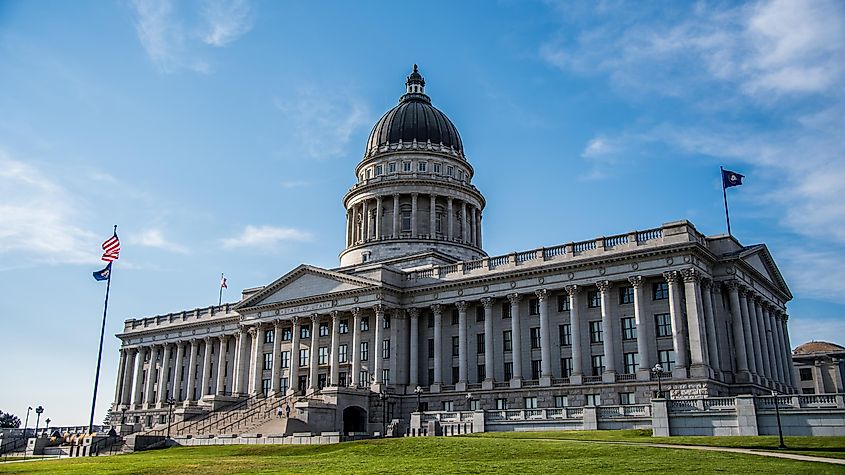
Confrontations between the Mormon settlers and the armed forces of the US government led to the Utah War from May 1857 to July 1858. In 1869, the first transcontinental railroad was completed, and another railroad linked the city with it the following year. This railroad brought many immigrants to work in the mining industries, and the city soon became a hub of Western commerce. In 1995, Salt Lake City was chosen to host the 2002 Winter Olympics.
Population And Economy Of Salt Lake City
As per the latest US Census, Salt Lake City has a population of 200,133 with a median age of 32.5 and a population density of 1797 inhabitants per square mile. The city’s top ethnic groups include White (Non-Hispanic) at 63.4%, Hispanic or Latino at 20.8%, Asian at 5.5%, Black or African American at 2.9%, Pacific Islander at 2.1%, Native American and Alaska Native at 1.4%, and Two or more races at 4.2%. About 89.2% of Salt Lake City’s residents are U.S. citizens, and the average car ownership in the city is two cars per household.
Salt Lake City has a median household income of $63,156 and a median property value of $346,100. The city’s modern economy is service-oriented, mainly built on transit hubs, suburban call centers, the convention industry, and seasonal tourism. The economy employs about 114,000 people in various large industries, including Educational Services, Health Care & Social Assistance, and Professional, Scientific, & Technical Services. Some prominent universities here include the University of Utah, Ensign College, and Westminster College.
Salt Lake City is also the country’s biggest industrial banking center that houses the headquarters of two Fortune 1000 companies: Quester Corporation and Zions Bancorporation. Some other well-known firms headquartered in the city include AlphaGraphics, Sinclair Oil Corporation, MonaVie, Creminelli Fine Meats, etc. Salt Lake City also served as the host of the 2002 Winter Olympics, which immensely helped in boosting the area’s economy.
Attractions In And Around Salt Lake City
Temple Square
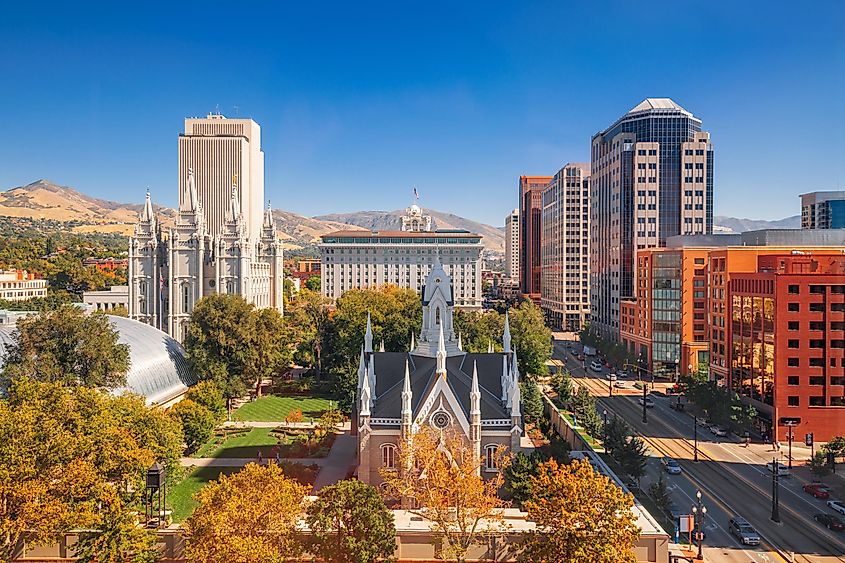
Owned by the LDS Church, this 10-acre complex is located at the heart of Salt Lake City. The Temple Square contains the Salt Lake Temple, Salt Lake Assembly Hall, Salt Lake Tabernacle, Seagull Monument, and North and South visitors’ centers. Temple Square also serves as a central point for all the street addresses in the city. It is the state’s most popular tourist attraction, with more than 3 million to 5 million tourists visiting annually. In recognition of the achievements of the Mormons in the settlement of Utah, Temple Square was named a National Historic Landmark District on January 29, 1964.
Olympic Cauldron Park
Placed outside the Rice-Eccles Stadium’s southwestern corner on the University of Utah campus, this plaza features the 2002 Winter Olympics cauldron. The “Salt Lake 2002 Olympic Cauldron Park,” which initially opened in 2003, contained the cauldron, a visitor center, and the Hoberman Arch. In 2020, the cauldron was removed from the park and reinstalled in the new plaza. Formally unveiled on October 29, 2021, the plaza allows unlimited public access to the cauldron’s base, besides featuring eight monuments that tell comprehensive stories with plaques and photographs related to the Olympic Games.
Church History Museum
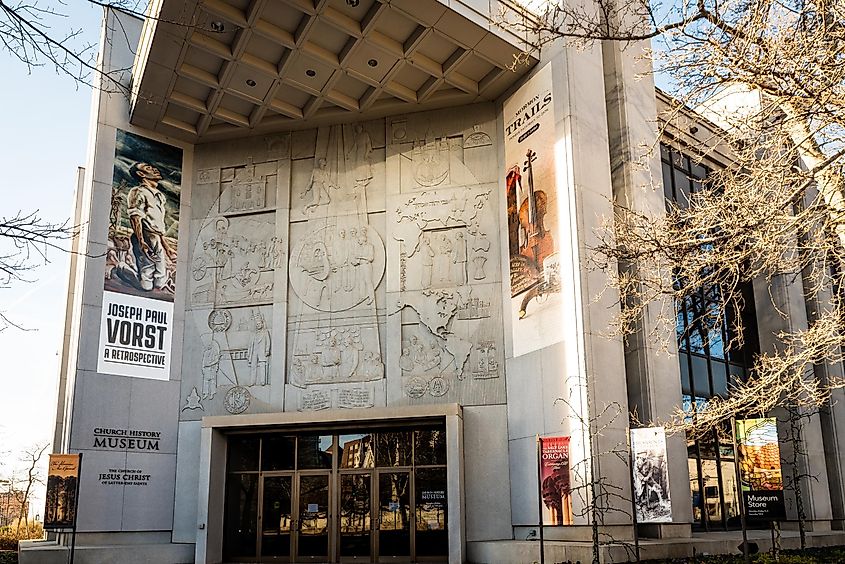
Managed by the Church History Department of the LDS Church, this premier museum is opposite Temple Square's western gates. The museum houses a collection of art, documents, tools, furniture, artifacts, photographs, and clothing dating back almost two centuries. Tours of the museum’s exhibits are conducted by curators, the Church’s administrative staff, and many volunteers. The Museum remains open to the public six days a week with no admission charges.
Liberty Park
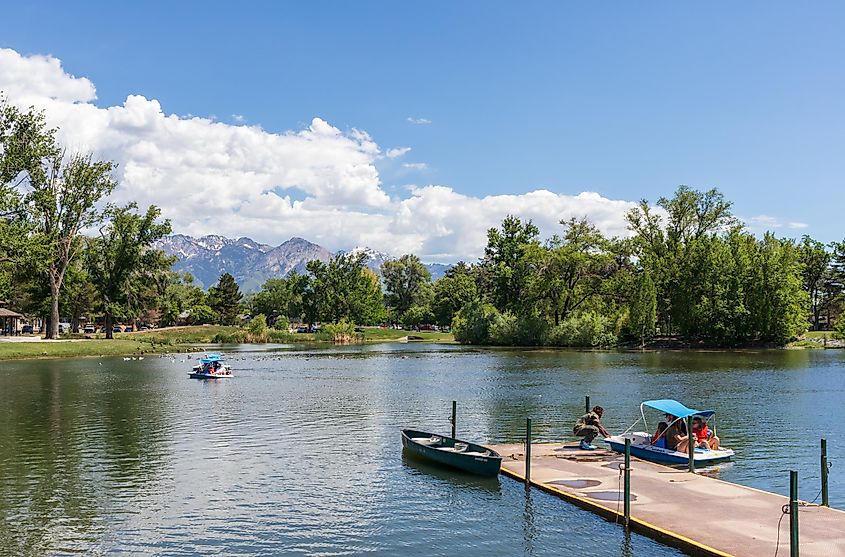
Spread over an area of 80 acres, Liberty Park is Salt Lake City’s second-largest public urban park. The park contains the Tracy Aviary, Issac Chase Mill, Chase Home Museum of Utah Folk Arts, and a small pond with two islands. Liberty Park offers several outdoor recreational activities, such as jogging, cycling, rollerblading, playing, picnicking, etc. The park is also a popular place to relax and witness the city’s firework display celebrating Pioneer Day. On December 11, 1980, the park was added to the National Register of Historic Places.
In addition to the above-mentioned tourist attractions, Salt Lake City hosts various festivals throughout the year that celebrates the diversities of the communities residing in the Salt Lake Valley. Some of these famous festivals include the Utah Pride Festival, Utah Arts Festival, Utah Shakespearean Festival, Living Traditions Festival, Polynesian Cultural Festival, and many more. With picturesque scenic views provided by the towering Wasatch Mountains, great concert venues, art houses, world-class restaurants, and unlimited outdoor recreational opportunities, the capital city of Utah offers a memorable experience to every tourist who visits the place.
